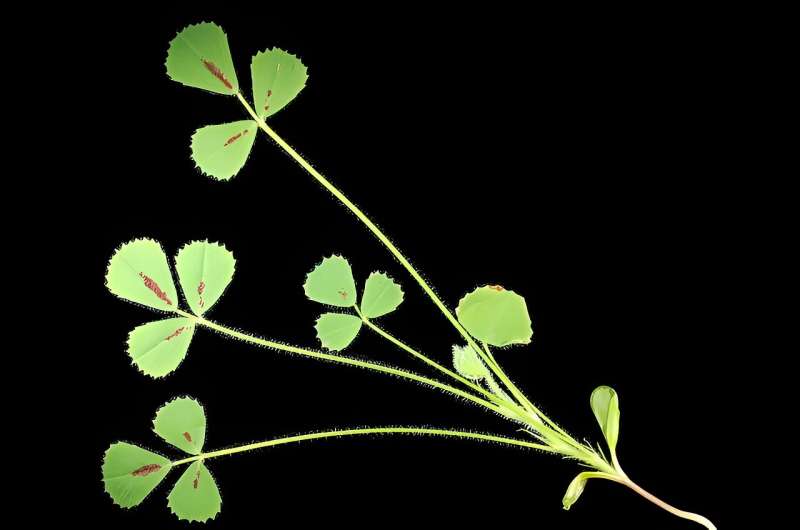This article has been reviewed according to Science X's editorial process and policies. Editors have highlighted the following attributes while ensuring the content's credibility:
fact-checked
trusted source
proofread
Study finds transcription factor regulating leaflet number in legume plants

Compound leaves are composed of several leaflets and show great complexity and morphological diversity. The milestone of compound leaf development is the formation of separate leaflet primordia during the early stages, which involves leaflet initiation and boundary establishment for leaflet separation. Researchers are exploring which molecular mechanisms are responsible for the regulation and integration of leaflet initiation and boundary formation during compound leaf development.
In a study published in The Plant Cell, Chen Jianghua's team from the Xishuangbanna Tropical Botanical Garden (XTBG) of the Chinese Academy of Sciences characterized a pinnate leaf pattern mutant pinnate-like pentafoliata2 (pinna2) in Medicago truncatula, which is phenotypically similar to the previously reported pinna1 mutant. They investigated the role of the generally recognized as safe (GRAS) transcription factor PINNA2 in the control of compound leaf morphogenesis in M. truncatula.
The researchers used gene knockout and functional analysis to study the function of PINNA2. They determined the importance of PINNA2 in compound leaf morphogenesis through a gene knockout experiment. Then, through functional analysis, they revealed how PINNA2 regulates compound leaf formation by binding directly to the promoter region of SINGLE LEAFLET1 (SGL1).
It was found that the novel GRAS transcription factor encoded by the PINNA2 gene is detected more frequently at the organ boundary. When PINNA2 is lost, trifoliate leaves transform into pentaphyllate needles. In addition, PINNA2 binds directly to the promoter region of LEAFY homolog SINGLE LEAFLET1 (SGL1), which is a key positive regulator.
Therefore, PINNA2 is an important GRAS transcription factor that regulates compound leaf formation by binding directly to the promoter region of SGL1. Loss of function of PINNA2 results in a transition from a three-leafed to a five-leafed needle shape.
"Our findings provide molecular insights into the coordination of complex developmental processes underlying compound leaf pattern formation," said Chen Jianghua.
More information: Liangliang He et al, GRAS transcription factor PINNATE-LIKE PENTAFOLIATA2 controls compound leaf morphogenesis in Medicago truncatula, The Plant Cell (2024). DOI: 10.1093/plcell/koae033
Provided by Chinese Academy of Sciences

















